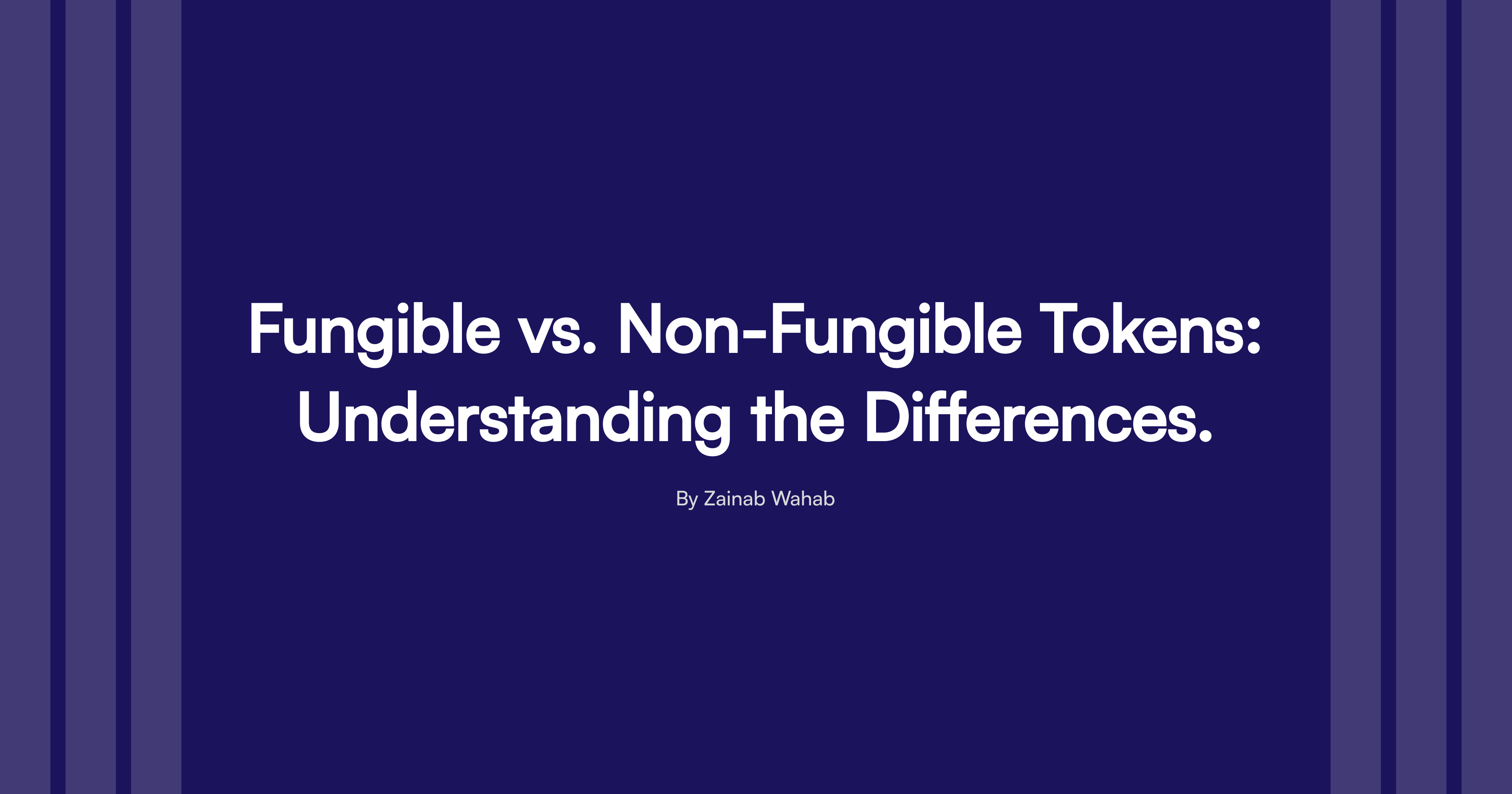Fungible vs. Non-Fungible Tokens: Understanding the Differences.
 Zainab Wahab
Zainab Wahab
Tokens are the cornerstone of blockchain technology, they have applications ranging from cryptocurrency to digital art.
However, not all tokens are the same. Tokens can be classified into two main types: fungible and non-fungible tokens (NFTs).
Understanding the distinction between these two is key to navigating the blockchain ecosystem, whether you're trading cryptocurrencies or collecting digital art.
Tokens
Tokens are digital assets that can represent a wide range of items, such as currencies, loyalty points, or digital collectables.
A token in itself does not hold value; rather, the asset it represents confers its value.
Fungible Tokens
Fungible tokens are interchangeable and can be replaced by another token of the same type without losing value.
These tokens are non-unique in that they hold the same value and characteristics, and are divisible, allowing them to be split into smaller units for trading or ownership.
On the Ethereum blockchain, fungible tokens are typically created using the ERC-20 standard, which sets a common set of rules for token operation.
Examples of fungible tokens include Tether USD (USDT), USD Coin (USDC), Shiba Inu (SHIB), and DAI Stablecoin (DAI).
Non-Fungible Tokens
Non-fungible tokens (NFTs) are unique and represent individual assets such as digital art, collectables, or in-game items.
Unlike fungible tokens, NFTs cannot be replaced or exchanged on a one-to-one basis because each represents something distinct. They are also indivisible, meaning you must own the entire token, not just a fraction of it.
On Ethereum, NFTs are created using the ERC-721 standard, which gives each token its unique and distinct properties.
Examples of NFTs include CryptoKitties, virtual cats that can be bought, sold, and bred on Ethereum.
Differences Between Fungible and Non-Fungible Tokens
Interchangeability:
Fungible tokens are interchangeable. For example, one USDT can be exchanged with another USDT or another ERC-20 token like Shiba Inu.
Non-fungible tokens are unique and cannot be exchanged on a one-to-one basis.
Divisibility:
Fungible tokens can be divided into smaller units for example 0.5 USDT can be traded.
Non-fungible tokens must be owned or traded as a whole.
Value Consistency:
The value of fungible tokens remains consistent across units for example one unit of USDT is worth the same as another unit of USDT.
The value of NFTs varies depending on their uniqueness and rarity. One NFT may be more valuable than another, even if they are part of the same collection.
Use Cases:
Fungible tokens are often used as cryptocurrencies or utility tokens.
Non-fungible tokens are used to represent ownership of unique digital assets and collectables.
Conclusion
Both fungible and non-fungible tokens serve important functions within the blockchain space, each with its own characteristics and use cases.
Understanding their differences is crucial for anyone looking to engage with blockchain technology, whether as a developer, investor, or user.
Subscribe to my newsletter
Read articles from Zainab Wahab directly inside your inbox. Subscribe to the newsletter, and don't miss out.
Written by
